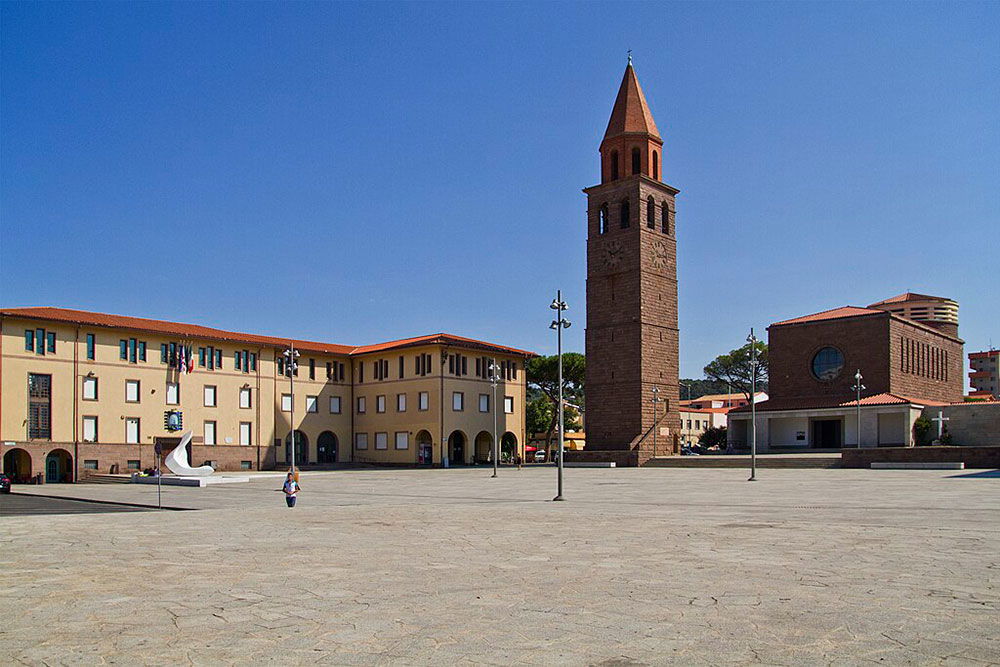
In the far southwest of Sardinia, Carbonia stands as a fascinating symbol of the island’s 20th-century industrial history and enduring resilience. Built in the 1930s to house workers of the local coal mines, Carbonia offers a very different perspective on Sardinia, one deeply tied to labor, migration, and innovation.
Today, Carbonia has evolved into a vibrant city, rich with historical significance, cultural attractions, and surrounded by an incredible natural landscape dotted with archaeological wonders and pristine beaches. For travelers looking for something off the typical tourist path, Carbonia is an essential and rewarding destination.
Carbonia’s story began in 1938 when it was founded by the Fascist regime as part of an ambitious project to boost Italy’s self-sufficiency in coal production. Its name, literally meaning "City of Coal", reflects its origins as the heart of Sardinia’s mining industry.
At its peak during World War II, Carbonia was a bustling center of economic activity, with thousands of miners drawn from across Italy. Though the mines closed by the 1970s, the city's urban plan, monuments, and spirit of community remain deeply linked to this industrial heritage
.The Grande Miniera di Serbariu (Great Mine of Serbariu) is Carbonia’s centerpiece and one of Sardinia’s most remarkable industrial heritage sites.
Today, the former mining complex has been transformed into the Museo del Carbone (Coal Museum), a compelling journey into the life of the miners. Visitors can explore restored tunnels, machinery, and workers' quarters, gaining insight into the tough and often dangerous world of coal mining.
The museum’s interactive exhibits, historical documents, and personal stories offer a moving tribute to the miners’ resilience. Guided tours provide a vivid, hands-on experience, making it a must-visit for anyone interested in Sardinia’s modern history.
Carbonia’s architecture reflects the ideals of rationalist design favored during Italy’s Fascist era. Wide boulevards, functional public spaces, and monumental buildings give the city a unique and structured look.
Key architectural highlights include:
Piazza Roma: The city's central square, dominated by the striking Torre Littoria (Lictor's Tower), a symbol of the Fascist period’s architectural style.
Church of San Ponziano: Built in the 1930s, the church is a fine example of neo-Romanesque architecture, simple yet imposing.
The layout of Carbonia itself, with its planned neighborhoods and orderly spaces, offers a fascinating glimpse into an era of ideological urban planning.
Beyond its 20th-century origins, Carbonia is surrounded by some of Sardinia’s oldest archaeological treasures.
Just a few kilometers from the city center lies Monte Sirai, a Phoenician and later Punic settlement established in the 8th century BC. This archaeological site, perched on a strategic hill, offers panoramic views of the surrounding plains and a chance to walk among ancient ruins, including houses, fortifications, and a sacred tophet.
Excavations at Monte Sirai have revealed remarkable artifacts, providing invaluable insights into Sardinia’s early interactions with Mediterranean civilizations. A visit to the site, coupled with its small museum, is a journey back over 2,500 years of history.
Nearby, the Necropolis of Cannas di Sotto contains prehistoric burial chambers, offering further evidence of the region’s long and fascinating past.
Carbonia is perfectly placed for nature lovers and beachgoers looking to explore Sardinia’s stunning southwest coast.
A short drive west brings you to Porto Pino, famous for its dazzling white sand dunes and crystalline waters. This idyllic beach is beloved for its peaceful atmosphere and breathtaking sunsets.
Further north, the island of Sant’Antioco is easily accessible via a causeway from the mainland. It offers charming villages, archaeological sites, and gorgeous beaches like Maladroxia and Coaquaddus.
The surrounding countryside, dotted with vineyards, olive groves, and Mediterranean scrub, invites exploration by bike, car, or even on foot along peaceful rural trails.
Carbonia’s cuisine reflects its working-class roots and Sardinia’s rich agricultural tradition. Expect hearty, flavorful dishes that celebrate local ingredients.
Typical foods include:
Pane Frattau: A layered dish made with carasau bread, tomato sauce, pecorino cheese, and poached eggs.
Sardinian lamb: Often slow-roasted with herbs and olive oil.
Malloreddus alla Campidanese: Small gnocchi in a rich sausage and tomato sauce.
Wines from the Sulcis region, especially Carignano del Sulcis, a robust and smooth red wine, are perfect for pairing with these traditional meals.
For travelers seeking an alternative Sardinian experience, Carbonia is a city full of surprises. It’s a place where 20th-century history, ancient archaeology, community resilience, and natural beauty come together in a rich, authentic tapestry.
From exploring mining tunnels and ancient Phoenician ruins to relaxing on pristine beaches and tasting traditional foods, Carbonia offers an unforgettable glimpse into the many layers of Sardinia’s identity.

More Details



